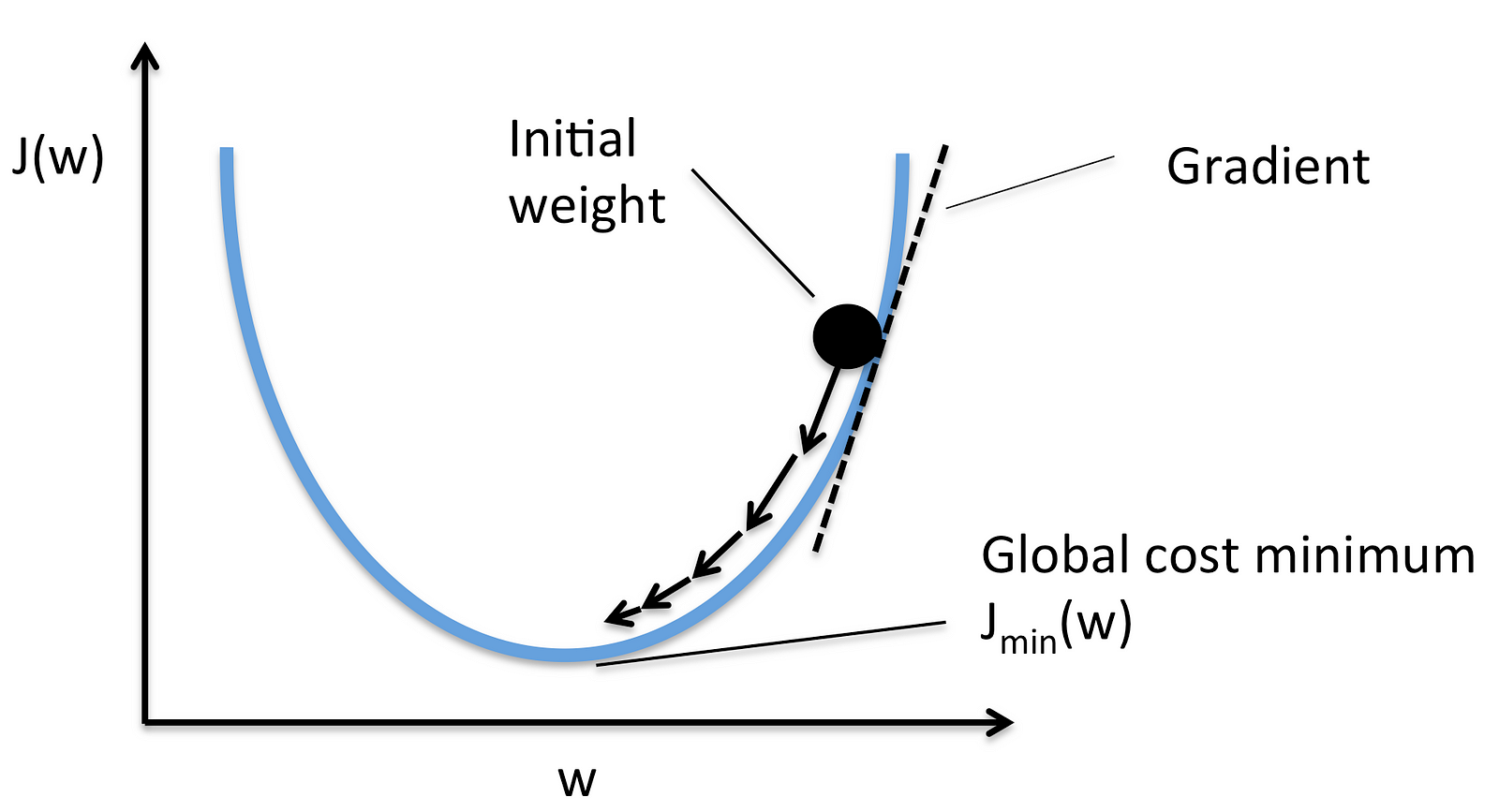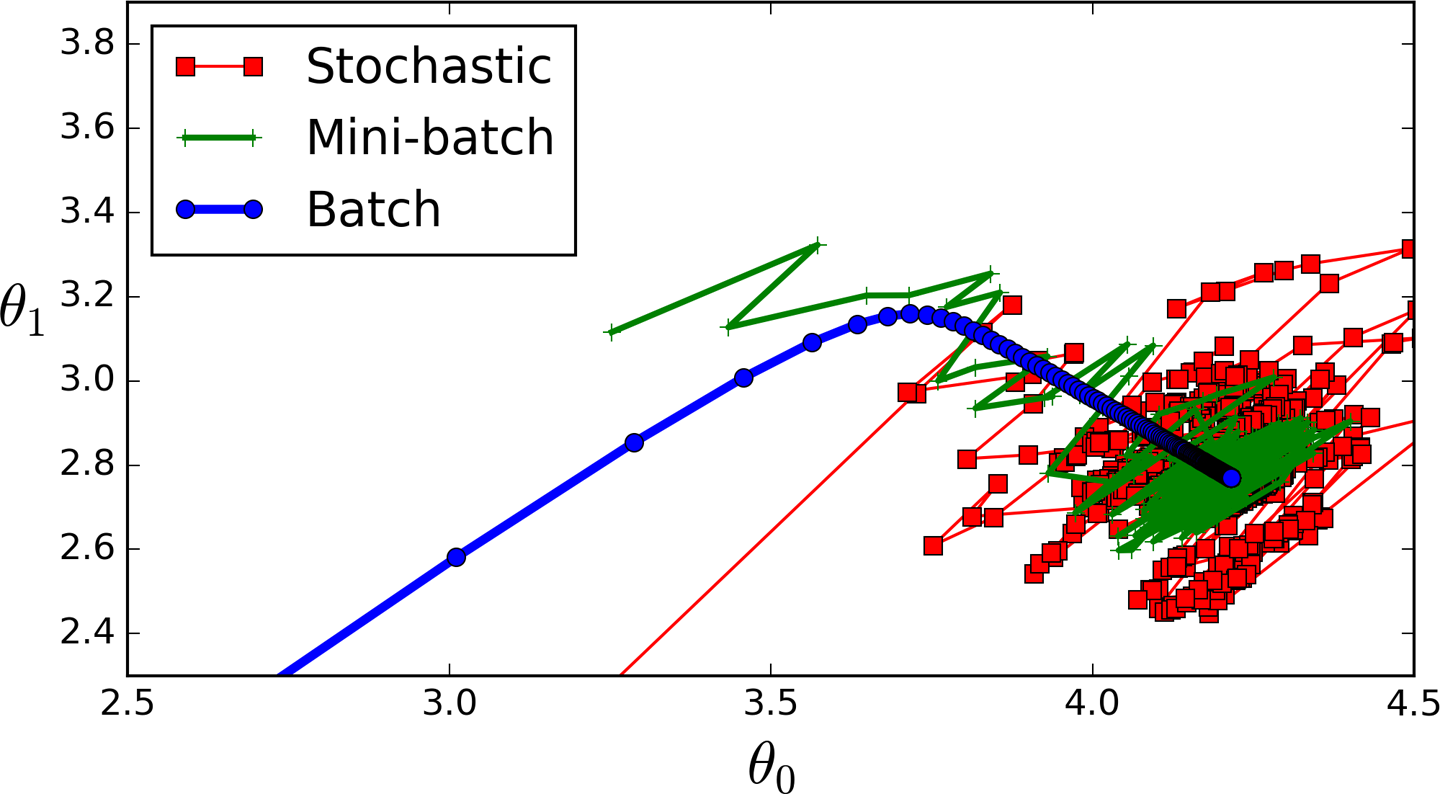勾配降下法の基礎#
勾配降下法とは,盲目のハイカー アナロジーが用いられます。 視覚障害者が白杖を頼りに山を下るイメージです。
 from https://cdn-images-1.medium.com/max/1600/1*f9a162GhpMbiTVTAua_lLQ.png
from https://cdn-images-1.medium.com/max/1600/1*f9a162GhpMbiTVTAua_lLQ.png
勾配降下法の意味#
-
勾配降下法を用いるためには,誤差関数,コスト関数,損失関数,と呼ばれる 量を定義する必要があります。
-
さまざまなコスト関数が提案されています。
-
コスト関数を各変数で微分することで,局所最小値を探すことを学習と呼びます
勾配#
平均自乗誤差の場合であれば次式で与えられます。
上式を で微分すれば,
を得ます。
学習率#
この微分情報に基づいて山を下っていきます。

from https://cdn-images-1.medium.com/max/1600/0*rBQI7uBhBKE8KT-X.png
数式で表現すると漸化式として次式のように表現できます:
のとり方によっては学習が遅くなったり,発散したりします。 を調整する手法がいくつか提案されています。
 saddle points
saddle points

勾配降下法の種類#
-
ミニバッチ: 全データをもちいずに,いくつかだけサンプリングして用いる商法です
-
確率的勾配降下法: そのつど一つづつ更新する手法です <!--
- [With every GD iteration, you need to shuffle the training set and pick a random training example from that.]
- [Since, you're only using one training example, your path to the local minima will be very noisey like a drunk man after having one too many drinks.] -->
- バッチ: 全データを用いる手法です
 from https://cdn-images-1.medium.com/max/1600/0*sFYJwQCCjOnXpSoD.png
from https://cdn-images-1.medium.com/max/1600/0*sFYJwQCCjOnXpSoD.png
実装#
def train(X, y, W, b, lr, max_iters): ''' Performs GD on all training examples, X: Training data set, y: Labels for training data, W: Weights vector, b: Bias variable, lr: The learning rate, max_iters: Maximum GD iterations. ''' dW = 0 # Weights gradient accumulator db = 0 # Bias gradient accumulator m = X.shape[0] # No. of training examples for i in range(max_iters): dW = 0 # Reseting the accumulators db = 0 for j in range(m): # 1. Iterate over all examples, # 2. Compute gradients of the weights and biases in w_grad and b_grad, # 3. Update dW by adding w_grad and dB by adding b_grad, W -= lr * (dW / m) # Update the weights b -= lr * (db / m) # Update the bias return W, b # Return the updated weights and bias.